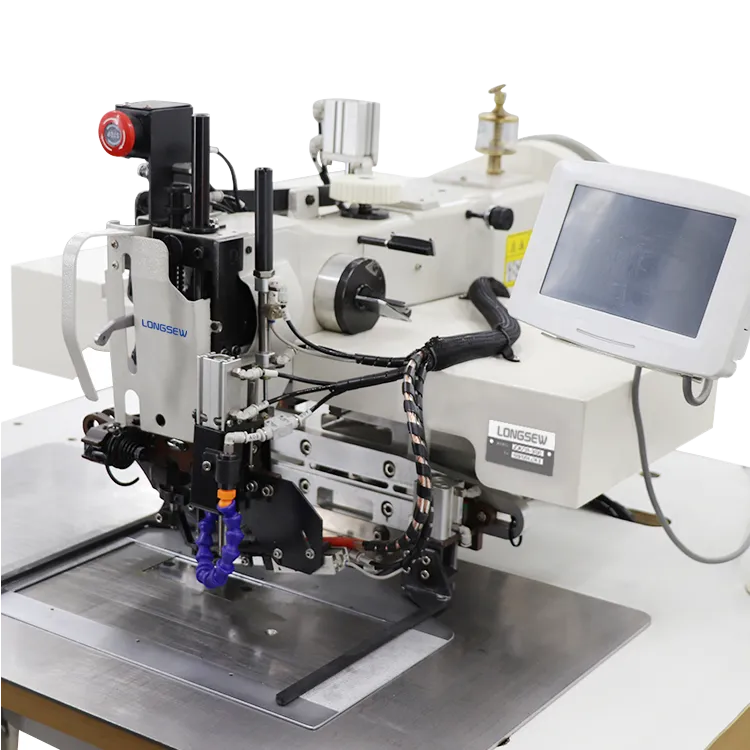Tips for Sewing Leather with a Home Sewing Machine
Sewing Leather on a Domestic Machine A Comprehensive Guide
Sewing leather can be an intimidating task for both beginners and experienced sewists alike. Unlike standard fabric, leather is thicker, more rigid, and requires different techniques to achieve a professional-looking finish. However, with the right tools, techniques, and a bit of practice, you can successfully sew leather using a domestic sewing machine. This article will guide you through the essential steps, tips, and tricks to get started with leather sewing.
Choosing the Right Leather
Before you start sewing, it’s crucial to select the right type of leather for your project. There are several types of leather, such as suede, full-grain, top-grain, and bonded leather. For beginners, it’s best to start with softer leathers like garment leather or lambskin, as they are easier to manipulate and sew. Avoid overly thick or stiff leathers until you gain more experience.
Preparing Your Machine
Not all sewing machines are created equal, especially when it comes to sewing through leather. Here are some adjustments to make
1. Needle Use a leather or denim needle. These needles have a wedge-shaped point that pierces leather without tearing it, ensuring clean holes.
2. Thread Opt for a heavier thread, like polyester or nylon, that can withstand the weight of the leather. Regular cotton thread may break or not hold up under stress.
3. Foot If available, use a walking foot or a Teflon foot. These feet help prevent the leather from sticking to the presser foot, allowing for smoother feeding through the machine.
Cutting and Preparing the Leather
Accurate cutting is essential in leather sewing, as mistakes can be costly. Use a rotary cutter or a sharp craft knife for clean edges. Always cut on a self-healing cutting mat to protect your work surface and blades.
Before you sew, consider marking any stitching lines with a tailor’s chalk or a fabric-safe pen
. Remember to test your markings on a scrap piece of leather to ensure they can be easily removed.sewing leather on a domestic machine

Sewing Techniques
When you are ready to start sewing, keep the following tips in mind
1. Set a Slow Speed Leather can be unforgiving, and sewing too quickly can lead to mistakes. Adjust your machine to sew at a slower speed for better control.
2. Backstitching Always backstitch at the beginning and end of your seams to secure the threads. This is vital for durable seams in leather projects.
3. Seam Allowance Use a consistent seam allowance, typically around 1/4 inch to 1/2 inch, depending on your project. Consider using a guide on your machine to help maintain straight lines.
4. Use Clips Instead of pins, use fabric clips to hold leather pieces together while sewing. Pins can create holes that won't close when removed, potentially compromising the look of your project.
5. Avoid Ironing Unlike fabric, leather can scorch or get damaged when exposed to heat. If you need to remove creases, consider using a steamer held at a distance instead of an iron.
Final Touches
Once you have completed your sewing, you may want to finish the edges to prevent fraying. Use leather edge tools or a simple sandpaper to smooth the edges. Additionally, consider applying a leather conditioner to keep your project supple and protected from wear.
Conclusion
Sewing leather on a domestic machine may seem daunting, but with the right preparation and techniques, it can be an enjoyable and rewarding experience. Take the time to practice on scrap pieces before tackling a full project. Remember that every stitch you sew enhances your skills, leading to more significant confidence in your sewing abilities. With these tips in hand, you're ready to embark on your leather sewing journey!
-
Boost Production Efficiency with a Pattern Sewing MachineNewsAug.29,2025
-
Industrial Excellence with the Best Heavy Duty Sewing MachineNewsAug.29,2025
-
Precision and Power with the Best Pattern Sewing MachineNewsAug.29,2025
-
Reliable Bulk Packaging Starts With the Right FIBC Sewing MachineNewsAug.29,2025
-
Advanced Packaging Solutions: Elevate Productivity with Jumbo Bag Sewing Machine and Industrial Stitching EquipmentNewsAug.29,2025
-
High-Performance Solutions for Bulk Packaging: FIBC Sewing Machine and MoreNewsAug.29,2025
-
Maximize Efficiency with an Industrial Cylinder Arm Sewing MachineNewsAug.28,2025


























